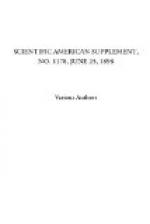An inventor may or may not be entitled to invoke the doctrine of mechanical equivalents, and the doctrine may or may not cause his patent to cover a given fancied infringement. If an inventor is a pioneer in a certain field, and is the first to produce an organization of mechanism by means of which a given result is produced, he is entitled to a claim whose breadth of language is commensurate with the improvement he has wrought in the art. He cannot claim functions or performance, but must limit his claim to mechanism, in other words, to the combination of elements which produces the new result. His claim recites those elements by name. If the new result cannot be produced by any other combination of elements, then, of course, no question will arise regarding infringement. But it may be that a competitor contrives a device having some of the elements of the combination as called for by the claim, the remaining elements being omitted and substitutes provided. The competing device will thus not respond to the language of the claim. But the courts will deal liberally with the claim of the meritorious pioneer inventor, and will apply to it the doctrine of mechanical equivalents, and will hold the claim to be infringed by a combination containing all of the elements recited in the claim, or containing some of them, and mechanical equivalents for the rest of them. Were it not for this liberal doctrine, the pioneer inventor could gather little fruit from his patent, for the patent could be avoided, perhaps, by the mere substitution of a wedge for the screw or lever called for by the claim. The court, having ascertained from the prior art that the inventor is entitled to invoke the doctrine of equivalents, will proceed to ascertain if the substituted elements are real equivalents. A given omitted element will be considered in connection with its substitute element, and if the substitute element is found to be an element acting in substantially the same manner for the production of substantially the same individual result, and if it be found that the prior art has recognized the equivalency of the two individual elements, then the court will say that the substituted element is a mechanical equivalent of the omitted element, and that the two combinations are substantially the same. This reasoning must be applied to each of the omitted elements for which substitutes have been furnished. In this way justice can be done to the pioneer inventor. But the courts, in exercising liberality, cannot do violence to the language of the claim. The infringer will not escape by merely substituting equivalents for recited elements, but he will escape if he omits a recited element and supplies no substitute, for the courts will not read out of a claim an element which the patentee has deliberately put into the claim, and a combination of a less number of elements than that recited in the claim is not the combination called for by the claim.




